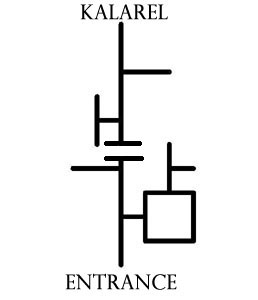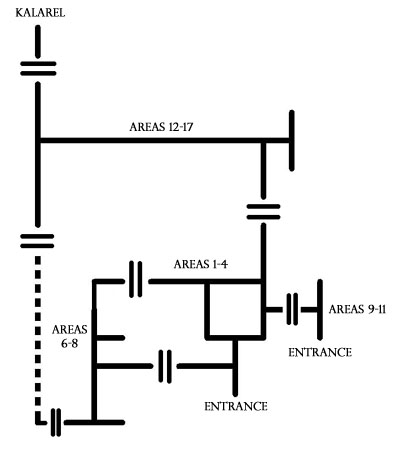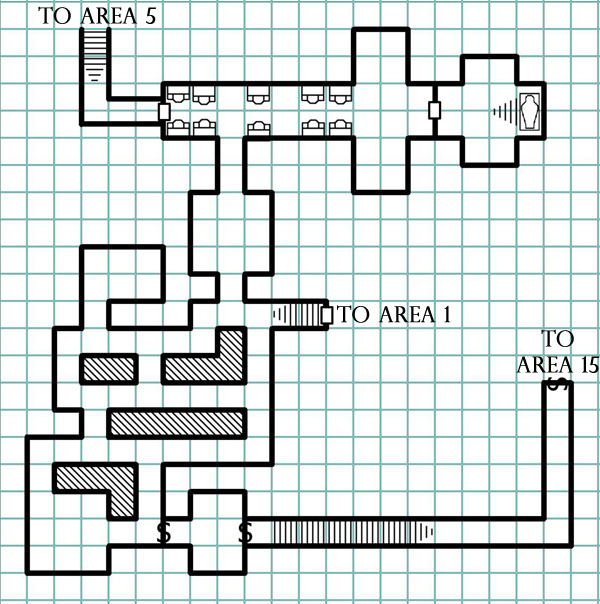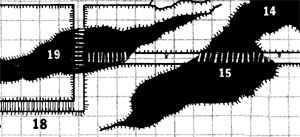Go to Part 1
We started with a linear dungeon:

But after xandering the Keep, the result is this:

Note that we haven’t changed the actual key to the adventure: We’ve just restructured the environment in which those encounters are placed.
I’ve also prepped some detail-light maps to make the changes a little clearer. You’ll want to cross-reference with the maps from the original module. (The original Level 2, which is now Level 3, is unchanged, so I didn’t re-map it.)


I’ll take a moment to note that this isn’t the only way we could have done this. Other things we could have done:
- Put a secret door at the bottom of the pit trap in area 1 (leading to one of several possibilities on the second level).
- Have the kruthiks tunnel from area 10 down to area 15.
- Put a teleport in Sir Keegan’s tomb keyed to a matching crypt on the second level.
- One of the prisoners in the torture chamber dug a hidden escape tunnel leading to area 6 (where he was killed by zombies, the poor bastard).
- Could there be a connection between the pool in area 11 and the water-based trap in area 16?
- Could the access to area 15 north of area 16 be a secret door, with a more obvious entrance leading from area 17 (allowing meticulous PCs to potentially bypass the trap)?
The particular revisions I’ve made simply struck me as either the most interesting or the most appropriate or both.
But the point of performing this revision on Keep of the Shadowfell is not only to salvage another aspect of this adventure. My primary goal is to demonstrate how easy it is to implement these techniques in your own dungeons. If we can take an existing, linear dungeon and fundamentally transform it in just a couple of minutes using a handful of xandering techniques, then the effect can be even more dramatic if we were to design a dungeon from the ground-up using those techniques.
Here’s a quote from a recent interview with Jennell Jaquays over on Grognardia:
The core inspirations for Caverns of Thracia were threefold. The first was to ally the various “beast” races of AD&D as a unified force. The second was to build encounters that took place in multiple levels of a cave, where the open upper areas were situated above open lower areas. The final inspiration (that I remember) was the rather primitive, but unique plate armor used by Mycenaean soldiers. These became the human guards of the upper reaches of the Caverns.
Of particular interest here is Jaquay’s second inspiration: I can personally testify to the effectiveness of these open caverns in transforming the typical dungeoncrawling experience. They immediately force the players to think in three dimensions, while their ubiquity significantly contributes to the memorable layout of the dungeon.

But the important revelation to be had here, in my opinion, is the effectiveness of clearly delineating a small list of concrete creative goals before beginning your dungeon design.
Building on that point, notice that Jaquays only specifies a single non-linear design technique in her list of creative goals. (And it’s actually a very specific variation of a generalized technique.) And although that is not the only non-linear technique employed in the Caverns of Thracia, Jaquays’ riffs on that theme are a definitive aspect of the module.
Here’s my point: Earlier in this series, I listed a dozen xandering techniques. Next time you’re designing a dungeon, don’t feel like you need to cram ‘em all in there. Instead, pick one of them and try to explore it in as many ways as possible while you’re designing the dungeon. (If you want a more focused experience, follow Jaquays’ example and try to narrow your design theme down to a specific variant of one technique – just like multi-level caverns are a specific form of unusual level connectors.)
Xandering your dungeon is easy. It’s also fun. And this applies to both the designing of the dungeon and the playing of the dungeon. Nothing is more exciting for me as a GM than to sit down at the table and know that I’m going to be just as surprised by my players as I hope that my players will be by me.
And when it comes to dungeon design, that’s the unique and exciting experience that xandering unlocks.
ADDITIONAL READING
Addendum: Dungeon Level Connections
Addendum: Xandering on the Small Scale
Addendum: How to Use a Melan Diagram
Dark Tower: Level Connections
















